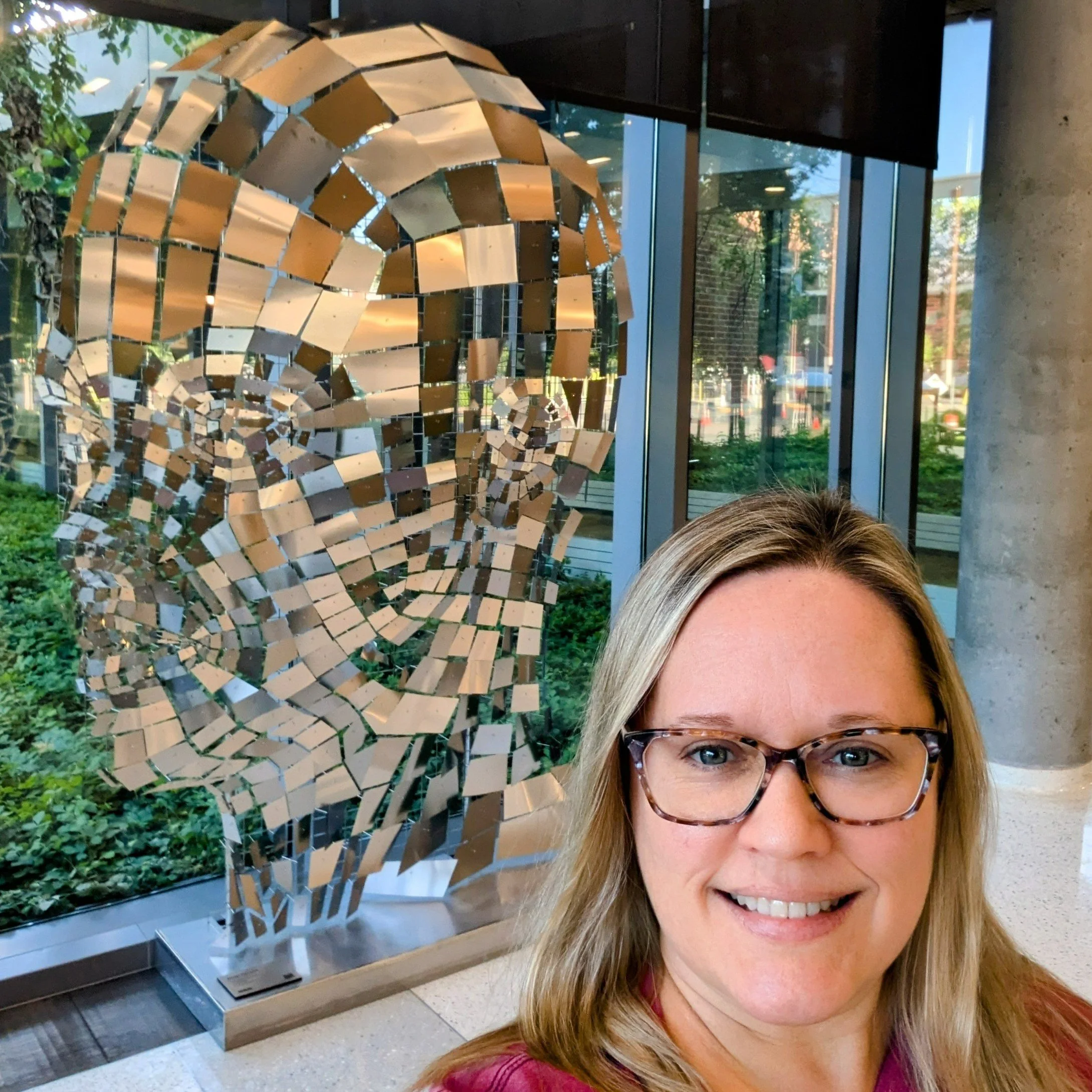Falling in awe with the human brain
Center for Magnetic Resonance Research at the University of Minnesota.
As I slid into the functional MRI machine, I had a moment of doubt.
Why did I sign up for this again?
The machine hadn’t even started, and already my body was responding. Anxiety fluttered through my chest, and a subtle edge of claustrophobia crept in as the walls closed around me. I wondered, is it too late to back out?
I held an emergency squeezeball in my left hand that could bring everything to a halt. So tempting…
“How are you doing, Aleisha?”
The very sweet research assistant, let’s call him Matt, checked in through my earpiece. Matt had spent several hours taking me through an in-depth intake process, drawing my blood, collecting a urine sample, and administering cognitive tests. After all that, I couldn’t back out now.
“Doing great!” I said, trying to sound more confident than I felt.
“Ok,” Matt said. “The noise will start now.”
And then, sure enough, the machine fired up and the clanking began.
I closed my eyes, took a few slow breaths, and remembered why I was there.
Science … and scratch-and-sniff tests
I had signed up for a long-term brain health research study through the University of Minnesota. It’s part of a national project to better understand how our brains change over time, and what factors might help keep them healthier, longer. I wanted to be part of that work. I wanted to contribute to the collective body of knowledge about this extraordinary, mysterious organ that directs the orchestra of human life.
That’s also why I’ve been wearing an activity tracker, logging my meals and sleep, and journaling my days. Why I took a hilarious scratch-and-sniff smell test (although let’s just say that particular technology has not evolved much since my childhood). And why I’ve begun referring to this whole exploration as a little “side quest.”
It started when I took a course in lifestyle medicine for wellness coaches. One of the units focused on brain health and how daily choices like movement, food, sleep, stress, and connection can shape our cognitive resilience. The unit lit something up in me.
That spark of interest led me to the study. And around the same time, I started listening to the audiobook The Worlds I See by Fei-Fei Li.
If you’re not familiar with her, she’s a pioneering scientist in the field of artificial intelligence. But her story isn’t just about machines; it’s about humanity. Her work began with research on how the brain processes images, how we learn and adapt, and how meaning is made from the swirl of perception. Listening to her story while participating in this study has felt like a beautifully timed convergence of science, wonder, and the awe of being human, all weaving themselves into the same moment in my life.
Our beautiful brains
The more I learn, the more reverent I feel toward the brain. It is adaptable. Resilient. Vulnerable. Wildly complex. It stores our memories, makes sense of the world, houses our emotions, and helps us solve problems, form relationships, and move through change. It grieves and grows. It pauses and leaps.
And yet so often, we treat the brain like a machine to optimize or something we only think about when it begins to fail.
But caring for your brain isn’t just about sharpening your memory or boosting productivity. It’s about honoring this vital, dynamic part of yourself that holds your capacity to imagine, empathize, create, rest, and connect.
It’s about seeing the brain not just as an object of study, but as a partner in your well-being.
What’s exciting is that we’re constantly learning more through long-term research, like the study I’m participating in, and through visionary thinkers like Dr. Li.
And the takeaway is becoming clearer: Our brains are not isolated systems. They are in constant dialogue with the rest of our lives.
Sleep matters. Movement matters. Food, yes—but also joy. Connection. Laughter. Stillness. Challenge. Purpose. Wonder.
There’s no single solution or perfect formula. But there are hundreds of small ways to support the brain you live with every day.
And the first step?
It might simply be remembering what a miracle it is to have one.
